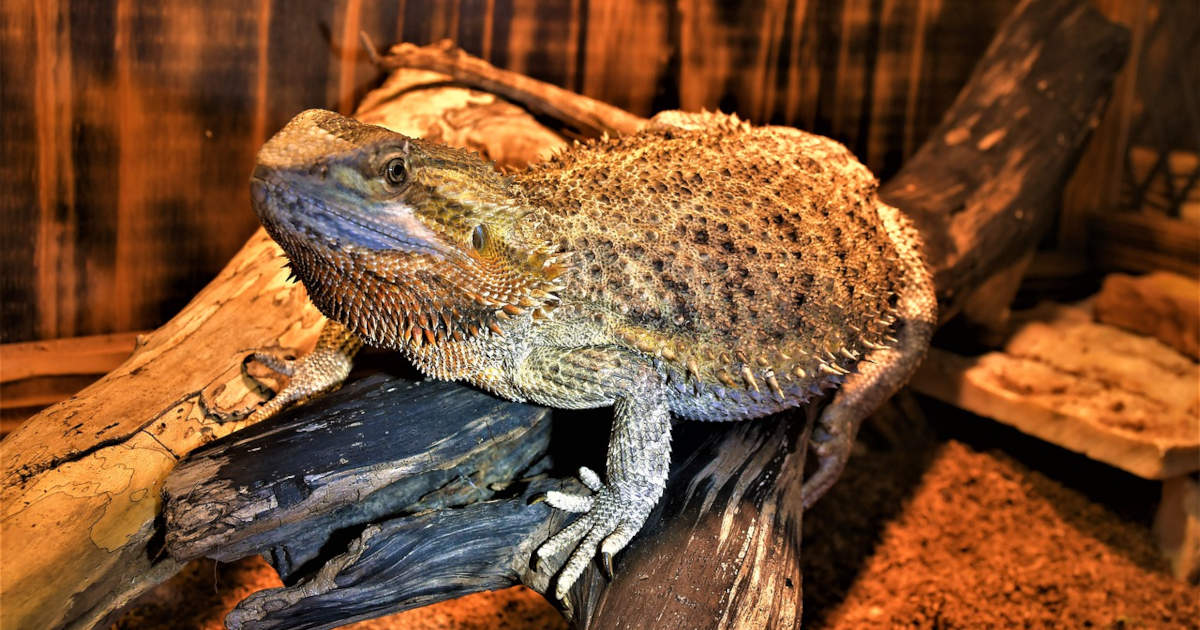Does A Bearded Dragon Tail Grow Back
In this post we answer the question about whether a bearded dragon can regrow their tails and whether they can live without tails if not

Last Updated: February 22nd, 2022
By: Steve
Table of Contents
In short, no. Bearded dragon tails do not grow back if they lose them. Bearded dragons cannot ‘throw’ their tail like many other lizards can in order to distract predators. If a bearded dragon loses its tail it is because of a traumatic event (such as another bearded dragon eats it or surgery).
If a bearded dragon loses its tail for whatever reason, it will heal as a stump but it will not grow back.
What Happens If A Bearded Dragon Loses Its Tail?
Bearded dragons can survive well without the full length of their tail, particularly in captivity. Many bearded dragons will experience tail problems as a result of stuck shed, falls, sliding doors, heat-lamp burns and other tail traumas that result in the tail dying and falling off, or needing to be removed surgically by a veterinary surgeon.
When a bearded dragon loses its tail for any reason other than surgery, it’s important to have your bearded dragon checked thoroughly and professionally. A tail that is lost through stuck shed, or trauma can lead to medical complications such as infection (and then sepsis potentially) which can cause significant health issues. A good vet check after a traumatic tail event is essential to ensure the safety of your bearded dragon.
But, with the right nursing care and possibly medications such as anti-biotics and even pain relief in some cases, your bearded dragon’s tail will form a stump with no significant problems afterwards. We’ve seen pictures of captive bearded dragons with almost no tail at all after amputation due to tail rot. They continue on in life perfectly fine – even if they look a little weird. But don’t tell them – it’s traumatic enough losing a tail without you pointing it out…
Why Is The End Of My Bearded Dragons Tail Dark?
There can be a number of reasons for this. The most common reason is simply nature. A smooth gradient from the body to the tip of the tail which gradually gets darker is quite normal in many bearded dragons. The gradient may begin at the body or part way down the tail. If it’s a gentle, smooth gradient it’s probably nothing to worry about.
A sudden change from normal colour to dark could be the start of tail rot and ought to be investigated. This can occur due to a circumferential stuck shed cutting off the blood supply to the tip of the tail, or due to other traumas the tail has endured recently. If it’s a sudden change in colour, a veterinary consult is always the best idea. There is no substitute for getting professional eyes to have a look.
Can Bearded Dragons Drop Their Tail?
No, unlike many other species of lizards, bearded dragons cannot drop their tail. As we’ve seen above, if a bearded dragon loses its tail it will never grow back. The lizards who can drop their tail all do it as a defence mechanism against predators. The idea behind a lizard dropping its tail is that the predator becomes distracted by the tail that has been dropped, allowing the lizard to run away. This works because the tail will wiggle and twitch after it is detached, appearing to be alive to the predator. But in those cases, the lizard regrows its tail so that the same trick can be used again.
Bearded dragons can’t regrow their tails and therefore they can’t drop their tail in order to evade predators either.
Can A Bearded Dragon Live Without Its Tail?
Yes, absolutely. Many captive bearded dragons live without their tails. They look a little odd. But if they’ve been properly cared for after the loss of the tail (i.e., they had proper nursing after the operation which removed the tail) then most captive bearded dragons will live long and happy lives even without their tails.
Their tail will never grow back again.
Summary
Bearded dragons cannot regrow their tails, whatever the reason they lost them might be. They cannot “throw” their tail to distract predators and a bearded dragon tail will not grow back after it’s been amputated.
However, bearded dragons can live in captivity quite happily without their tails, also they might find balancing on branches and ledges a little more difficult at times.
If your bearded dragon sustains a tail injury, it’s important to seek veterinary help as soon as possible to save as much of the tail as possible – and potentially even your bearded dragon’s life. Tail rot can lead to sepsis which will ultimately end with a very sick or dead bearded dragon.
If you’ve found this post helpful please share it with your friends using the buttons below. If you have a question or feedback relating to this post, please do feel free to leave us a comment using the form below.
Featured Image by HIROMASA HADACHI from Pixabay
